| Basic Specifications | |
|---|---|
| Full model name: | Fujifilm GFX 50S |
| Resolution: | 51.40 Megapixels |
| Sensor size: | Medium format (43.8mm x 32.9mm) |
| Kit Lens: | n/a |
| Viewfinder: | EVF / LCD |
| Native ISO: | 100 - 12,800 |
| Extended ISO: | 50 - 102,400 |
| Shutter: | 1/16000 - 3600 sec |
| Dimensions: |
5.8 x 3.7 x 3.6 in. (148 x 94 x 91 mm) |
| Weight: |
32.5 oz
(920 g)
includes batteries |
| Availability: | 02/2017 |
| Manufacturer: | Fujifilm |
| Full specs: | Fujifilm GFX 50S specifications |
GFX 50S Summary
The Fuji GFX 50S and its over 50-megapixel medium format sensor deliver excellent image quality and resolving power. The mirrorless camera offers decent performance for its class, but its superb imaging capabilities come with compromises, such as slow autofocus and shooting speeds which pale in comparison to high-end full-frame cameras. The performance doesn't keep it cheap either, as the GFX 50S body costs US$6,500. However, this price is very affordable for a medium format camera and you can't beat the image quality for less money.
ProsFantastic image quality across the board; Excellent RAW dynamic range; Superb high ISO performance; Functional and user-friendly body; Robust weather-sealed construction; Detachable EVF; Tilting touchscreen; Very good lens quality.
ConsSlow AF speeds; Performance can't compete with high-end full-frame cameras; Limited native lens selection so far; Expensive accessories; Unimpressive JPEG dynamic range; 1/125s maximum flash sync.
Price and availabilityThe FUJIFILM GFX 50S launched in late February 2017 with a body-only price of just under US$6,500. The FUJINON GF63mmF2.8 is its most affordable native lens, and sells for US$1,500. Additional lenses include the GF23mmF4, GF110mmF2, GF120mmF4 macro and GF32-64mmF4 zoom lens, with prices ranging from US$2,300 to US$2,800.
Imaging Resource rating5.0 out of 5.0
- Core Technology
- Imaging
- Photographer Friendly
- Gets the Shots
- Designed for Pros
- Workflow
- FUJINON GF Lenses
- System
The FUJIFILM GFX 50S features a 43.8x32.9mm CMOS medium format sensor, boasting an effective resolution of 51.4 million pixels. Both the shape of the light-gathering micro-lenses and the processing from the photodiodes have been optimized to achieve a high level of sharpness and broad dynamic range. The lowest native ISO sensitivity of 100 and the 14-stop dynamic range, achieved with 14-bit RAW data delivers high definition images in a variety of conditions with notably rich skin tones and intricate foliage detail.
Learn more about GFX 50S TechnologyThe FUJIFILM GFX 50S sports the X-Processor Pro image processing engine, capable of drawing the very best out of the 51.4 megapixel sensor. Its advanced processing accelerates and optimizes the camera's performance in a variety of areas including stunning color reproduction with Fujifilm's unique Film Simulation modes, in-camera RAW conversion to the 8-bit TIFF format, accurate contrast AF, quick startup time, and minimal shutter release time lag and shooting intervals between frames.
Learn more about GFX 50S TechnologyThe FUJIFILM GFX 50S uses the G Mount, which has a mount diameter of 65mm, flange back distance of 26.7mm and minimum back focus distance of 16.7mm. It uses as many as 12 electronic contact points for sending and receiving data, plus it supports the use of a wide variety of lenses and accessories. The short back focus distance, made possible because of the Fujifilm mirrorless system's structure, affords greater freedom in lens design to contribute to the development of fast, compact and high-performance GF lenses while preventing vignetting to deliver edge-to-edge sharpness.
Learn more about GFX 50S TechnologyThe FUJIFILM GFX 50S saves pictures in a variety of formats and quality, including two sizes and three compression levels of JPEGs, as well as compressed/uncompressed RAW. Even when you are shooting only in RAW, the camera records 12-megapixel thumbnails at the same time, for detailed, instant previews inside Lightroom and other organizers and RAW converters. Check even fine details while sorting your images, without having to wait for RAW conversion! Its in-camera RAW conversion function also enables RAW files processing with the ability to save them as 8-bit TIFFs.
Learn more about GFX 50S ImagingISO: With a standard ISO sensitivity range of ISO 100-12,800 and extended settings down to ISO 50 and up to ISO 1,024,000, the GFX 50S can capture anything from sun-on-snow to dim interiors and after-dark night shots.
White Balance: Two-dimensional (red/blue) white balance fine-tuning and the ability to store up to three custom white balance settings lets you precisely adjust the camera to your lighting and subject.
Image Quality Controls: Adjust dynamic range, highlight and shadow tone, color saturation, sharpness and noise reduction in fine steps, for from-camera JPEGs you can use without tweaking.
Learn more about GFX 50S Image QualityThe GFX 50S’s 11 film simulation settings distill 80 years of Fujifilm’s color-producing know-how from photographic film manufacturing down to easy menu choices. Much more than simple color filters, they reproduce the unique and complex color and tone rendering of classic film emulsions.
There's a lot more to the GFX 50S's film simulation options than can fit here. Click the button below for more details about these unique and subtle settings, for inspiration on how you might use them in your own work.
Learn more about GFX 50S Film SimulationsHigh-magnification, high-definition EVF: Detachable 3.69 million-dot EVF gives 100% frame coverage at a magnification of 0.85x, and diopter adjustment from -4 to +2. (Optional tilting adapter)
Large, tilting touchscreen LCD Smart three-way tilting 3.2-inch touch screen monitor gives an enlarged live view up to 16.7x, and lets you touch to select AF areas, bring up an RGB histogram, display the 3D electronic level and enlarge the Live View image.
Sub Monitor for instant status Top-panel LCD is viewable in all conditions, including bright sunlight, provides an always-on, customizable, instant view of camera settings.
Learn more about GFX 50S usabilityThe GFX 50S’s autofocus system sports your choice of 117 or 425 AF points, six sizes of focus area that can be moved around the frame, six AF modes, face/eye-detection AF and both magnified viewfinder images and focus peaking for manual-focus assist. AF modes include:
- AF-S Single Point
- AF-C Single Point
- AF-S Zone
- AF-C Zone
- AF-S Wide
- AF-C Wide
Five Types of Bracketing (+/- EV for 2/3/5/7/9 frames, Film Simulation, Dynamic Range (100/200/400%), ISO sensitivity, White Balance)
Built-in interval timer for time-lapse, 1sec-24hr per shot, 1-999 shots, plus “infinite” (shoots until the card is full)
Multiple Exposure, combine two exposures into one for creative effects.
Learn more about GFX 50S exposure optionsThe FUJIFILM GFX 50S employs the worlds first focal-plane shutter specifically designed for medium-format mirrorless cameras. An electronic first curtain reduces shutter noise and minimizes shutter-caused vibration for maximumally sharp images, while offering shutter speeds as fast as 1/4,000 second and a rated life of 150,000 cycles.
Learn more about GFX 50S Exposure OptionsFull HD (1920x1280) video recording in a medium-format camera, at 29.97p, 25p, 24p and 23.98p!
Not only that, but Fujifilm’s unique film simulation modes work for video recording too. Use CLASSIC CHROME for a old-school documentary-themed look, or ACROS for stunning black and white imagery, with all the richness of classic film emulsions.
Learn more about GFX 50S Video CapabilitiesDust-resistant, weather-resistant and freezeproof to -10C
The GFX 50S body is made from robust magnesium alloy, which feels both solid and durable in the hand. The body is weather-sealed in 58 points to achieve a high level of resistance to dust and moisture.The GFX 50S is compact and lightweight despite the large size of its sensor, plus its dust and weather-resistant body means it's equally effective in the studio or out in the field.
Learn more about the GFX 50S Build Quality- Customize to fit the way you work: Ten customizable buttons, custom menus too
- Protect your work: Embedding copyright data in EXIF
- Voice Memo Function: Easily save shooting notes and comments while you work
- Wireless Connectivity: Remotely control the camera and transfer images to your smartphone or tablet. (Great for location services or shooting landscapes with the camera on a tripod.)
Tethered Shooting: Use the optional HS-V5 for Windows software to tether the FUJIFILM GFX 50S using a USB cable or via Wi-Fi. This enables you to directly save pictures on to a computer or control the camera from the computer. An optional Photoshop/Lightroom plugin lets you tether directly from those programs as well.
Wireless Connectivity: Remotely control the camera and trsnser or view in-camera images with the free FUJIFILM Camera Remote app on your smartphone or Tablet
In-camera RAW conversion (including Film Simulations!): RAW conversion can be performed in the field without a computer. Exposure compensation, white balance, image quality and other in-camera settings can all be easily changed. You can even apply a Film Simulation mode of your choice to RAW images.
Learn more about GFX Workflow SolutionsExceptional optical quality: FUJINON lenses have catered to the needs of professional medium and large-format photographers, and are a standard of excellence in the demanding broadcast TV industry. Now, that expertise has been applied to lenses for the GFX system. Built to exacting quality standards and designed to meet the resolution requirements of the GFX line into the future, they are pinnacles of optical and mechanical design.
Built to last: All GF lenses have solid brass lens mounts, for strength, durability and reliability, while a system of seals makes them resistant to dust, water, and temperatures down to -10C (14F).
Learn more about FUJINON GF LensesThe FUJIFILM GFX 50S is more than just a camera, it’s an entire system designed to help professional photographers, realize their creative vision with maximum image quality, flexibility and throughput. Besides the body and lenses, the growing GFX System includes:
- Remote control and external power solutions
- Audio in/out and HDMI-out connections, plus an optional camera-mounted external mic
- Optional electronic viewfinder tilt adapter
- Optional FUJINON H-mount lens and view-camera adapters
- Optional dedicated shoe-mount external flashes
- Optional vertical grip
- FUJINON H-series and view-camera lens adapters
Fuji GFX 50S Review
by Jeremy Gray, Mike Tomkins, Zig Weidelich and William Brawley
Preview posted: 01/19/2017
Review finalized: 08/22/2017
Fujifilm stole the show back at Photokina 2016 with the surprise development announcement of its GFX 50S, a super-high-res medium-format camera in a mirrorless form factor. Now that we've had the chance to put it through its paces both in the lab and out in the field, we're proud to present our Fuji GFX 50S review for your reading pleasure!
The Fuji GFX system itself is brand new, and it's clear that Fujifilm's designers had several key goals for its creation: Keeping size and weight to an absolute minimum, while not compromising on handling or image quality.
At launch, the GFX system was comprised of the GFX 50S camera body itself and three GF lens models. Since then, Fujifilm has announced two additional GF lenses and plans for a sixth to launch by the end of 2017. There are also several GFX accessories including a portrait / battery grip, tilting viewfinder adapter, and adapters allowing use of various medium and large-format lens models from the days of film photography.
 |
The GFX 50S pairs a mirrorless design and high-res 51.4-megapixel sensor
The key to the GFX 50S' compact form factor is its mirrorless design. Instead of providing a DSLR-style thru-the-lens optical viewfinder, the GFX 50S opts instead for a high-res electronic finder. That decision allowed Fujifilm to do away with the bulky mirror box typical of a medium-format DSLR like Ricoh's competing Pentax 645Z.
And the advantage of paring down that mirror box is clear: Despite using the exact same sensor size as its Ricoh rival, Fujifilm's camera is about 5% less wide, 20% less tall and and a whopping 26% less deep, with dimensions of 5.8 x 3.7 x 3.6 inches. Loaded and ready to go, the GFX 50S' body-only weight is just 29.1 ounces without the electronic viewfinder accessory, or 32.5 ounces with it mounted, again comparing very favorably to the 54.7-ounce weight of Ricoh's camera. That's barely more than half the weight of its rival!
 |
And this despite using not just the same sensor size, but also while sporting much the same sensor resolution. Like the Pentax 645Z before it, the GFX 50S offers up around 51.4-megapixel resolution from a 43.8 x 32.9mm, Bayer-filtered CMOS image sensor with approximately 1.7x the light-gathering area of a 35mm full-frame chip.
Although its size and resolution are quite familiar, as is performance which we'll come to in just a moment, Fujifilm describes the sensor in the GFX 50S as being a "Fujifilm exclusive", indicating that it's not the exact same Sony-sourced sensor used in the Pentax 645Z. Of course, that doesn't necessarily mean that it was an in-house design -- it could be a variant of the Sony chip, but with tweaks to the color filter array, microlenses and/or pixel structure to meet Fujifilm's needs.
 |
We hinted at performance of the GFX 50S in the previous paragraph, and here too Fujifilm's camera looks to be on level pegging with Ricoh's now almost three-year old Pentax 645Z design. Like that camera, the GFX 50S will be capable of capturing full-resolution images at up to 3.0 frames per second.
Burst depth is claimed to be on the order of eight uncompressed raw or 13 losslessly-compressed raw frames, with JPEG burst depth essentially limited only by available storage space and power. However, in our lab tests, the GFX captured 40 best quality JPEGs and 21 losslessly-compressed RAW files before slowing. This is significantly better than its closest rival, the Pentax 645Z. The Pentax offers the same burst rate, but could only manage 12 best-quality JPEGs or 10 RAW files before slowing. The GFX's support of fast UHS-II cards also means buffer clearing is much faster than the 645Z. See our Performance page for details.
Sensitivity is another area in which the GFX 50S looks quite similar to its Ricoh rival at first glance. Both cameras have a base sensitivity of ISO 100 equivalent, with the 50S able to roam as high as ISO 12,800-equivalent by default, and spanning a range from ISO 50 to 102,400-equivalents with its extended sensitivity range enabled. The 645Z doesn't have an extended range, and instead provides everything from ISO 100 to 204,800-equivalents by default. That gives Fujifilm a slight edge on the lower end of the range, and Ricoh a similar edge at the higher end.
 |
The viewfinder and displays are a couple of areas in which the GFX really distinguishes itself from its Ricoh rival, just as you'd expect of a mirrorless camera. Where the 645Z uses a Keplerian telescopic trapezoid prism finder with 98% coverage, the GFX 50S instead selects a high-res 3.69 million dot organic LED-based finder with 0.85x magnification and a manufacturer-claimed 100% coverage.
 |
And while its rear-panel display has the same 3.2-inch diagonal measurement as in the 645Z, the GFX 50S boasts higher display resolution (2.36 million dots, vs. 1.04 million for the 645Z), a more versatile articulation mechanism (tilting in three directions, vs. two directions for the 645Z) and includes touch-control capability, a feature its Ricoh rival lacks altogether.
There's also a small monochrome LCD on the top deck of the GFX 50S. It's rather smaller than the top-deck info display of Ricoh's camera, but still manages to fit in all of the main exposure variables for at-a-glance confirmation of setup. Interestingly, it has a dark background with lighter text rather than the more typical dark text, light background design used in the 645Z. It also remains active even when the camera is powered off.
Of course, as a camera aimed at pros your purchase doesn't end at the sales counter. Fujifilm knows that professionals need a high level of service, and the company has stepped up to the plate with its Fujifilm Professional Services program, priced at US$500 per year or thereabouts. You'll need to register your GFX within 30 days of purchase for eligibility, but once you've done so you'll receive a array of goodies and services.
Member benefits include a welcome kit and swag bag, a personalized Fujifilm Professional Services card with dedicated hotline access, four Check & Clean Program Service vouchers, a 50 percent discount on additional Check & Clean Program Services, two business day turnaround for Check & Clean services, 30 percent discount on non-warranty repairs, two business day turnaround for non-warranty repairs and GFX system loaners for covered equipment while it is being repaired if the repair is expected to exceed two business days.
Read more on the new program here!
 |
Available in the North American market since late February 2017, the Fuji GFX 50S is priced at around US$6,500 body-only, making it just slightly more affordable than the Pentax 645Z, which as of press time now lists for around US$7,000 body-only.
Pricing for the first three Fujinon GF lenses is set at around US$1,500 for the GF 63mm F2.8 R WR, US$2,300 for the GF 32-64mm F4 R LM WR and US$2,700 for the GF 120mm F4 R LM OIS WR Macro.
Fuji GFX 50S Field Test Part I
The medium format GFX tries its hand at landscape photography
 At Photokina 2016, Fujifilm did something many Fujifilm shooters had been eagerly anticipating: they announced a camera with a sensor larger than APS-C size. What was surprising about this announcement was that Fujifilm opted to skip over the popular full-frame format and dive straight into medium format territory with the GFX 50S, a 50-megapixel medium format mirrorless camera.
At Photokina 2016, Fujifilm did something many Fujifilm shooters had been eagerly anticipating: they announced a camera with a sensor larger than APS-C size. What was surprising about this announcement was that Fujifilm opted to skip over the popular full-frame format and dive straight into medium format territory with the GFX 50S, a 50-megapixel medium format mirrorless camera.
Launching in late February 2017, the GFX 50S hit store shelves with a body-only price tag around US$6,500. This price tag makes it about $2,500 less expensive than the competing Hasselblad X1D mirrorless camera, which also employs a 50-megapixel sensor, albeit in a slimmer, sleeker camera body with many less physical controls than the GFX 50S.
Fuji GFX 50S Field Test Part II
Taking a closer look at the GFX for video and portraiture
 I have been shooting with the GFX 50S since early March, and it has continued to impress me. In my first Field Test, I discussed the GFX with the GF32-64mm f/4 lens, mostly in the context of shooting landscape images. I covered the camera's ergonomics, autofocus and overall performance as well.
I have been shooting with the GFX 50S since early March, and it has continued to impress me. In my first Field Test, I discussed the GFX with the GF32-64mm f/4 lens, mostly in the context of shooting landscape images. I covered the camera's ergonomics, autofocus and overall performance as well.
In this second Field Test, I will be discussing using the GFX 50S with the GF 63mm f/2.8 lens, expanding the prior discussion in a few ways and covering new topics, including the GFX 50S's video recording features and quality and its wireless functionality. I will also be discussing using the GFX as a portrait camera, primarily in the context of fast-paced environmental portraiture, and evaluate the camera's face detect and eye autofocus capabilities.
Fuji GFX 50S Field Test Part III
Investigating Color Chrome, the sensor and additional features
 In Field Test Part I and Part II, I covered much of the GFX 50S' features and performance. However, the camera has numerous other features that could easily fly under the radar. I wanted to dig deeper into topics such as the new Color Chrome Effect, in-camera RAW processing, wireless and tethered shooting and finish with a collection of observations I've made during my extended time with the camera. Let's get to it and put a bow on my Fuji GFX 50S Field Testing.
In Field Test Part I and Part II, I covered much of the GFX 50S' features and performance. However, the camera has numerous other features that could easily fly under the radar. I wanted to dig deeper into topics such as the new Color Chrome Effect, in-camera RAW processing, wireless and tethered shooting and finish with a collection of observations I've made during my extended time with the camera. Let's get to it and put a bow on my Fuji GFX 50S Field Testing.
Fujifilm Color Chrome Effect: What is it and does it look good?
As part of Fujifilm's ongoing GFX Technologies series, the company has gone behind the scenes with its new Color Chrome Effect. The GFX is the first Fujifilm camera to include the all-new Color Chrome Effect feature.
Fuji GFX 50S Image Quality Comparison
See how the GFX's IQ compares to some high-res rivals
 Here we present crops from our laboratory Still Life target comparing the GFX's image quality to the highest resolution challengers we have tested to date: The 50-megapixel full-frame Canon 5DS R, the 51-megapixel medium format Pentax 645Z, the 101-megapixel medium format Phase One XF 100MP, and the 42-megapixel full-frame Sony A7R II Mark II. We've also decided to change up our typical IQ Comparison layout to accommodate larger crops -- the 250 x 250-pixel square crops normally seen in our IQ tables just don't show much from very high resolution images like these when viewed at 100%. And we've included one stop higher in terms of ISO sensitivity.
Here we present crops from our laboratory Still Life target comparing the GFX's image quality to the highest resolution challengers we have tested to date: The 50-megapixel full-frame Canon 5DS R, the 51-megapixel medium format Pentax 645Z, the 101-megapixel medium format Phase One XF 100MP, and the 42-megapixel full-frame Sony A7R II Mark II. We've also decided to change up our typical IQ Comparison layout to accommodate larger crops -- the 250 x 250-pixel square crops normally seen in our IQ tables just don't show much from very high resolution images like these when viewed at 100%. And we've included one stop higher in terms of ISO sensitivity.
NOTE: These images are from best quality JPEGs straight out of the camera (except for the Phase One XF 100MP which cannot produce in-camera JPEGs), at default settings including noise reduction and using the camera's actual base ISO (not extended ISO settings). All cameras in this comparison were shot with our very sharp reference lenses. Clicking any crop will take you to a carrier page where you can click once again to access the full resolution image as delivered straight from the camera.
Fuji GFX 50S Print Quality
But how does it look on paper?
 Wow! Talk about an absolutely stunning performance in our print quality analysis. The new 50MP medium-format Fuji GFX packs an incredible amount of resolving power and sophisticated image processing, making it capable of impressive prints at up to 30 x 40 inches (at least) all the way up to ISO 3200! Below ISO 3200, you could make even larger prints, but we hit the limit of our testing size. As ISO rises, the GFX displays excellent noise control, with a very gradual increase in noise; and the noise that we can see is very finely-grained, almost film-like. As such, the camera is capable of shockingly large prints, such as a 24 x 36 at ISO 6400 and even just hitting the mark for a quality 11 x 14 inch print at ISO 25,600. At ISO 51,200, the GFX 50S takes the crown as king of the 8 x 10 inch print! Besting high ISO heavyweights from Nikon, such as the D810, which topped-out at ISO 25,600 for that print size, the GFX manages an impressively clean 8 x 10 at this super-high ISO level. At the maximum expanded ISO of 102,400, however, images are a bit too noisy for our taste, and this ISO should be avoided for quality prints.
Wow! Talk about an absolutely stunning performance in our print quality analysis. The new 50MP medium-format Fuji GFX packs an incredible amount of resolving power and sophisticated image processing, making it capable of impressive prints at up to 30 x 40 inches (at least) all the way up to ISO 3200! Below ISO 3200, you could make even larger prints, but we hit the limit of our testing size. As ISO rises, the GFX displays excellent noise control, with a very gradual increase in noise; and the noise that we can see is very finely-grained, almost film-like. As such, the camera is capable of shockingly large prints, such as a 24 x 36 at ISO 6400 and even just hitting the mark for a quality 11 x 14 inch print at ISO 25,600. At ISO 51,200, the GFX 50S takes the crown as king of the 8 x 10 inch print! Besting high ISO heavyweights from Nikon, such as the D810, which topped-out at ISO 25,600 for that print size, the GFX manages an impressively clean 8 x 10 at this super-high ISO level. At the maximum expanded ISO of 102,400, however, images are a bit too noisy for our taste, and this ISO should be avoided for quality prints.
Fuji GFX 50S Technical Insights
A peek inside the world's first medium-format mirrorless cam
 Body. The Fuji GFX 50S sports a brand-new medium-format, mirrorless camera body crafted from magnesium alloy. According to Fujifilm, its choice of a mirrorless design allowed a one-third reduction in weight, as compared to a similar camera with a DSLR design and the same sensor size.
Body. The Fuji GFX 50S sports a brand-new medium-format, mirrorless camera body crafted from magnesium alloy. According to Fujifilm, its choice of a mirrorless design allowed a one-third reduction in weight, as compared to a similar camera with a DSLR design and the same sensor size.
The GFX 50S body is weather and dust-resistant, and freezeproof to allow use in temperatures as low as 14°F (-10°C). Dedicated dials are provided for shutter speed and ISO sensitivity control on the camera body itself, while there's a ring dedicated to aperture control on all GFX lenses.
Each of these controls also has an Auto position, so you can attain fully-manual control by switching all three to their Auto positions, then return to priority or manual control by switching some or all of the controls back away from their Auto positions.
Fuji GFX 50S Conclusion
Some of the best image quality we've seen
 Last year, Fujifilm announced the GFX system, their new medium format mirrorless statement. The first camera in the system is the 50S and we have had a lot of time with the camera both in our lab and in the real world. Be sure to read all our coverage for the full details on its performance throughout our testing if you haven't already. We're now ready to wrap up our coverage of the GFX 50S camera. Let's take a look at its strengths and weaknesses.
Last year, Fujifilm announced the GFX system, their new medium format mirrorless statement. The first camera in the system is the 50S and we have had a lot of time with the camera both in our lab and in the real world. Be sure to read all our coverage for the full details on its performance throughout our testing if you haven't already. We're now ready to wrap up our coverage of the GFX 50S camera. Let's take a look at its strengths and weaknesses.
While the GFX 50S is a medium format camera, its sensor is smaller than what you will find in a camera like the medium format Phase One XF100MP. The GFX 50S' imager is a 51.4-megapixel 43.8 x 32.9 millimeter Bayer-filtered CMOS sensor. It's worth pointing out that the largest image size that the GFX produces is 51.1 megapixels (8256 x 6192 pixels). In case you're curious, the larger medium format sensor in the XF 100MP is 53.7 x 40.4 mm.
In the Box
The GFX 50S body-only retail kit (as reviewed) contains the following items:
- Fujifilm GFX 50S (Body Only)
- EVF-GFX1 Interchangeable EVF
- NP-T125 Rechargeable Lithium-ion Battery Pack
- BC-T125 Battery Charger
- Plug Adapter
- Body Cap
- Shoulder Strap
- 2 Strap Clips
- 2 Strap Clip Locks
- Cable Protector
- Hot Shoe Cover (Body/EVF)
- Connector Cover for EVF
- Vertical Battery Grip Connector Cover
- Sync Terminal Cover
- User Manual
- Limited 1-Year Warranty
Recommended Accessories
- Fujinon GF Lenses
- Large capacity SDHC/SDXC memory cards. 32GB should be a minimum, and we highly recommend fast UHS-II cards.
- At least one spare NP-T125 Battery Pack
- VG-GFX1 Vertical Battery Grip
- EVF-TL1 EVF Tilt Adapter
- RR-90 Remote Release
- Camera Bag
Buy the Fujifilm GFX 50S
$4707.65 (21% less)
102 MP (50% more)
Also has viewfinder
7% larger
$2101.48 (171% less)
42.4 MP (21% less)
Also has viewfinder
42% smaller
$2496.95 (128% less)
45.7 MP (12% less)
Also has viewfinder
36% smaller
$2348.00 (143% less)
42.4 MP (21% less)
Also has viewfinder
73% smaller
$1864.67 (206% less)
24.2 MP (112% less)
Also has viewfinder
42% smaller
$1499.00 (280% less)
30.3 MP (70% less)
Also has viewfinder
13% smaller
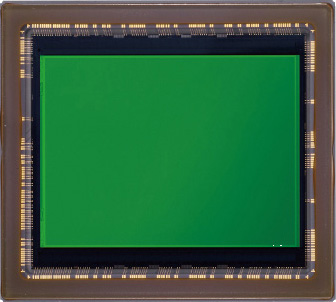
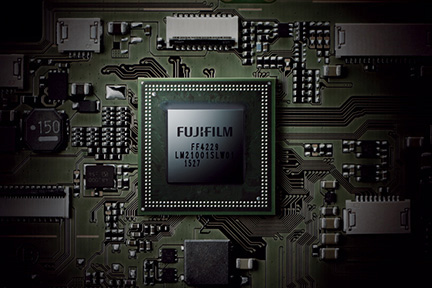
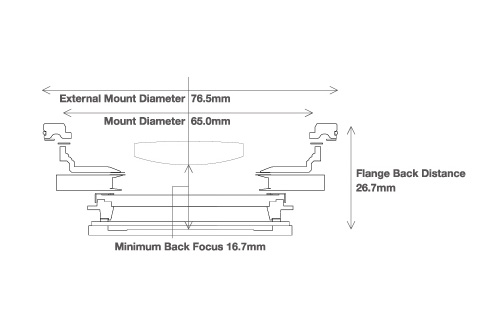
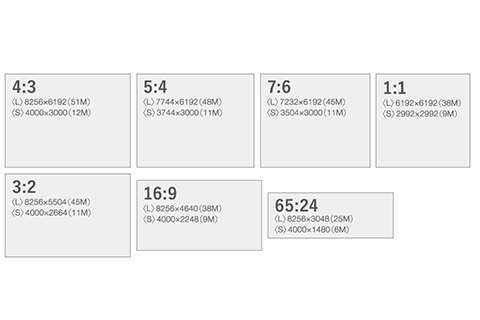
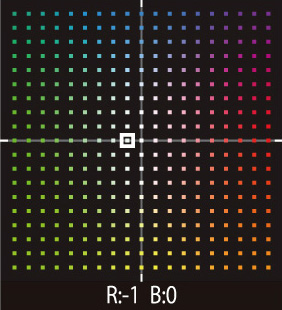
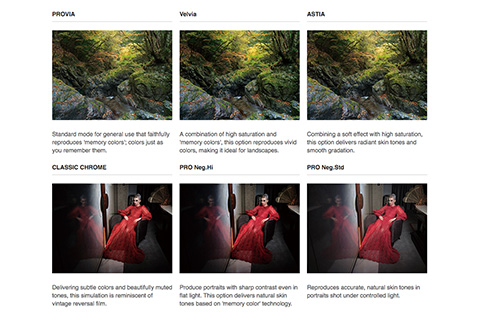
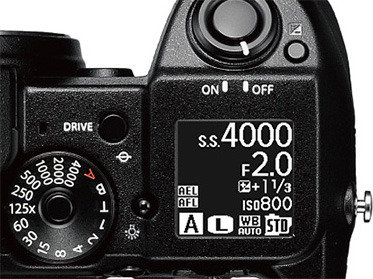
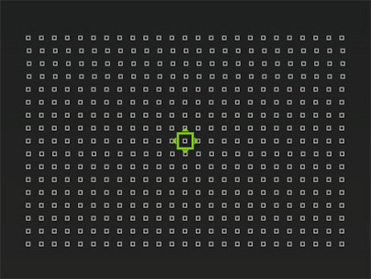
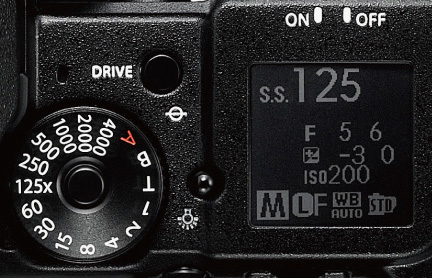
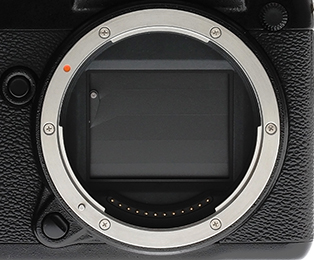
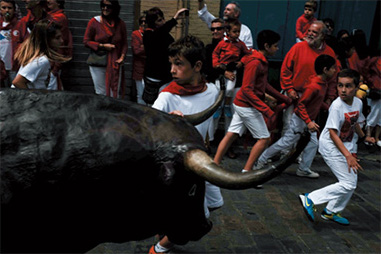
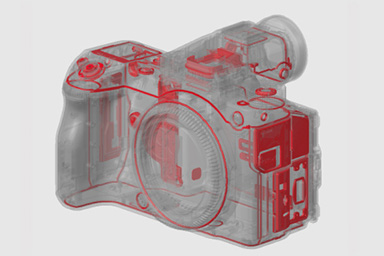
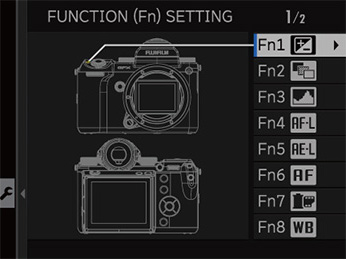
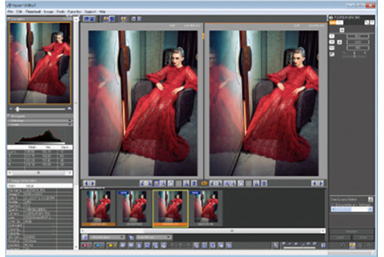
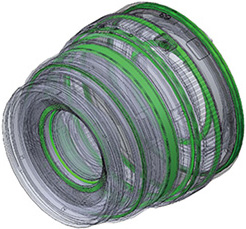
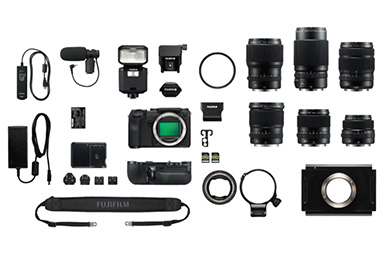





Follow Imaging Resource